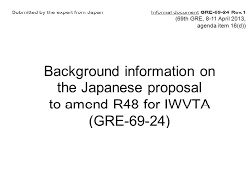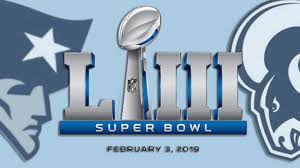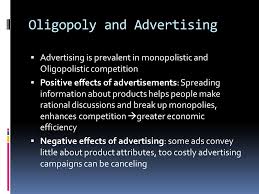Customer Behavior Model and Perception Research My thought is to specifically look at the customer behavior model and perception.

And my target group would be 19-23-year-old first-year students in INN. INN is my college in Norway
My research question is: In what way do perception affect the buying behavior of first-year INN students to purchase Red Bull.
My research objective:
To see if Red Bull’s sponsorship to big athletes and sports events has influenced the students.
To find out how often the students notice the product in stores.
To find out how loyal the product consumers are.
To find out how healthy the students perceive the drink.
The syllabus for this research paper is Schiffman, L. G., Kanuk, L. L. & Hansen, H. (2012). Consumer Behavior – A European Outlook, Prentice Hall.
This task requires me to ask questions to students in my school. I was hoping the writer could come up with some good research questions then I could send the answers the students gave me back to the writer.
I’ve included the assignment guidelines. Please keep in mind that I am Norwegian. So please don’t use overly complicated sentences when writing this research paper. It should look like a 20-year-old average English speaking person wrote it.
ASSIGNMENT GUIDELINE FOR THE SEMESTER WORK/ASSIGNMENT
Consumer Behaviour 3MAR240, Spring 2018.
Aim of assignment
The broad aim of this assignment is to encourage students to conduct scientific research by writing a research paper related to consumer behavior based on a specific company or product.
Assignment task
The idea of this assignment is to investigate and study consumer/consumer behavior in regards to a chosen company or product by conducting scientific research. The students will select the type of consumer and company/product of their choice, but the course coordinator/lecturer will have to approve the topic.
Format requirements
ï The length of the assignment should be between 5000-7000 words.
ï Word count should not include front cover, title page, contents page, references or appendices.
ï Assignments must be word-processed in 12 point Times New Roman font (or similar) with 1.5 line spacing
ï Margins must be as follows: Top: 2.5 cm, Bottom: 2.5 cm, Left: 2.5 cm, Right: 2.5 cm
ï All pages must be numbered
Submission
ï This semester work/assignment is based on individual work.
ï The assignment has to be handed in on Frontier, in the Hand-in folder called ìSemester work assignmentî
ï No email submissions! Late submission will not be accepted.
Layout requirements
You will need to ensure that your assignment meets the assessment criteria below and follows the correct layout and format including:
ï Front/title page with your name and student number, the title of the assignment which specifies the chosen area within consumer behavior is studied and word count
ï Table of contents list with page numbers.
ï Introduction.
ï Literature review/theory
ï Chosen methodology
ï Discussion of results
ï Conclusions and recommendations
ï Appendices (if needed)
ï References (should be in APA6 Format)
The following pages provide a template of the structure of your semester work/assignment
Front/title page
TITLE
Your title should be precise, describing the content of the assignment. It should also reflect the chosen area within consumer behavior you have focused on. The title usually describes the subject matter of the study
Some examples,
ìFactors influencing studentsí purchase behavior in regards to chocolates: a case of Kvikklunsjî.
the ìA case study of Bookings.com. Family holiday travels and decision-making process among Norwegian familiesî
ìThe needs of the consumer of motor vehicles: lessons from Skodaî
Author details:
ï Name and student number
ï Lecturer in Charge:
Word counts:
Customer Behavior Model and Perception Abstract
An abstract, or summary, is published together with a research paper, giving the reader a “preview” of what has to come. They allow other scientists and readers to quickly scan the large scientific literature, and decide which articles they want to read in-depth. The abstract should be a little less technical than the article itself; you do not want to dissuade your potential audience from reading your paper.
- Your abstract should be one paragraph, of 100-250 words, which summarises the purpose, methods, results/main findings and conclusions of the paper.
- It is not easy to include all this information in just a few words. Start by writing a summary that includes whatever you think is important, and then gradually prune it down to size by removing unnecessary words, while retaining the necessary concepts.
- As for this semester work/assignment, an abstract is not required.
TABLE OF CONTENT
Lists the content of your work with page number
1.0 INTRODUCTION
The assessment should start with an introduction. Here we will find a short summary of the content and what you want to explore or discuss.
ï What is the purpose of this study?
ï What is your research question or objective (in regards to consumer behavior)? E.g. what do you want to find out? It is either research question or objectives depending on how you formulate it, not both!
ï Examples of possible research questions or objectives:
ï ìWhich type of information sources is considered as most reliable among family with young children when comes to holiday decision-making?î
ï ìInvestigating factors that influence university students to buy Kvikklunsj in the Easterî
ï ìWhat factors contribute to effective customer complaints management in restaurants?î
ï ìîHow does company X facilitate customer complaints as a way to retain its customers?
ï ìIdentifying the various needs of consumers of motor vehicles and how can Skoda fulfill such needs with their current products and offeringsî
As illustrated, the title is not the same as research question or objective, but they have to be related.
ï Although your title already reveals which areas you want to focus on, here is where you explain more why you want to study this area in particular.
As the research question/objective is related to the theory, a tip is to understand and choose the theory first before a research question is developed.
ï What are the current research gaps? A typical gap is, this topic has not been studied before, or this topic has not been studied in this context etc.
ï Explain why your research is interesting and why is it important
ï Make the reader curious!
2.0 LITERATURE REVIEW/THEORY
2.1 Information about the company/product
Start by introducing the company or organization and chosen product or service in this chapter.
ï The companyís profile
ï Identity attributes and history
ï A brand discussion if necessary
ï And other aspects that may be interesting and relevant to the chosen topic
2.2 Information about your chosen consumer/segment
ï Who are they?
ï Profile? Age? Gender? Etc.
2.3. Heading here should be relevant to your chosen theory e.g. ìPre-purchase behaviourî
Remember that chosen theory has to be related to your research question/objective described in the introduction.
Examples of theories:
ï Refer to consumer decision-making model on page 15 of the textbook
ï Pre-purchase buying behavior/input/external forces
ï The actual consumer decision making/process
ï Post-purchase behavior/output
ï To specify your research question/objectives even further, you may choose to specify within each stage/box.
ï E.g. pre-purchase buying behavior ñ influences by sociocultural environments such as family (reference groups)
ï Or e.g. process/consumer decision-making stage ñ focusing on the motivation of buying a certain product or use a type of service
ï Should the consumer decision-making model/stage be chosen, this model should be included and explained in this chapter
ï You may also choose other models (from the textbook) which are relevant to your chosen topic
Using additional resources:
In addition to the textbook, you are required to consult at least five scientific peer-reviewed journal article in order to discuss your chosen theory in details.
ï This forms the basis of a scientific research paper
ï Wikipedia and personal blogs are NOT considered as reliable sources and should NOT be used in a research paper
ï Newspaper articles and statistics can be used to describe trends, but they DO NOT have any theories.
3.0 METHODOLOGY
3.1 Qualitative or quantitative methodology
Qualitative or quantitative?
ï Why have you chosen this approach?
ï What are the strength and weaknesses of the chosen method?
ï How can you deal with the weaknesses?
ï Remember hypothesis/statements are only used in quantitative studies
If qualitative (collecting rich data),
ï How many interviews? Face-to-face interviews? Or phone interviews?
ï Who will you ask? Will the people you ask gto ive you enough information to answer your research question?
ï How will you contact them?
If quantitative (numbers and statistics)
ï Who will you ask? How will you ask?
ï Will you use electronic survey or paper?
ï How will you contact them?
3.2 The data collection process
ï How did you collect the data?
ï Via email? Face-to-face?
ï Did you travel to meet the respondents?
ï How long was the interview (if qualitative)?
ï How many surveys were sent out (if quantitative)?
3.3 Data analysis
After data has been collected,
ï How did you analyse the data?
ï Was data analysis software used?
ï Or did you do manually?
Remember torefer to what you have learned/will learn in Metode 1
3.6 Ethical considerations
Mention relevant ethical considerations. If you used human subjects, did they consent to participate? How did you guarantee anonymity?
4.0 RESULTS AND DISCUSSION
4.1 Profile of respondents
ï Highlight and report the most significant results
ï Should provide a profile of the respondents, age, gender, geographic location (demographic questions) etc. but no names or other information that may identify them
4.2 Heading should be related to the findings/results, e.g. ìFactors influencing students to buy Kvikklunsjî)
4.2.1 Influenced by family
4.2.2 Price
4.2.3 Brand loyalty
4.2.4 Etc.
While results are direct reports of your findings (describing the findings), the discussion is different (analysing the findings).
ï E.g. results from ñ A DESCRIPTION OF THE FINDINGS:
ï Factors that influence students to buy Kvikklunsj could be price/cheap, familiarity, influence by parents/friends, sense of belonging (to a certain social group) etc.
ï If quantitative, you would provide some statistics on how many people said this and how many people said that
ï Here you could also have tables or graphs to illustrate the results
ï If qualitative, you would have some direct quotes on what they have said about buying Kvikklunsj.
ï Here you would have quotes like:
ï ìI buy Kvikklunsj because my family always buys it in Easter. Itís a tradition for us, I canít think of any other brands. Kvikklunsj to me is Easterî (Respondent 1).
Discussion on the other hand ñ ANALYSIS OF THE FINDINGS,
ï You are not only reporting what you have found but also have to discuss your findings/results in regards to your chosen theory from chapter 2.
ï Discussion means
ï Discussing the real behaviour of the chosen segment.
ï E.g. in chapter 2/theory section, the textbook/theory has said this about consumer decision-making, your findings may either agree or disagree/prove or disapprove the theory.
ï Hence, you are analysing the result by linking your findings/results (also called empirical findings) to the theory.
ï Meaning you should compare the theory and the real behaviour (your findings). Is the theory accurate? Or it the real behaviour totally different? Why is it different? Why is the theory wrong (if it is wrong)?
ï Perhaps the theory is only partially correct?
ï Or the theory is 100% correct (which is rare in most circumstances)
5.0 Customer Behavior Model and Perception Conclusion
End your research with a summary of your conclusion and key findings.
ï You should also provide some recommendations to the company if you are studying about a company
ï You may also provide recommendations for future studies based on your findings
Good students/assignments should also be able to discuss some of the limitations/weaknesses of their research.
6.0 REFERENCES (LITERATURE CITED AND USED)
ï Referencing should be In APA6 format.
Customer Behavior Model and Perception Appendices
ï Appendices should not be more than five pages. A rule of thumb, if the appendix is more than one A4 page in length, it should be an appendix. If it is only half a page in length, then it should be inside the main text.
ï Appendices are not compulsory; include them if they are necessary.
ï Examples of appendices: the interview guide, the survey questionnaire, large tables or figures of your result.












